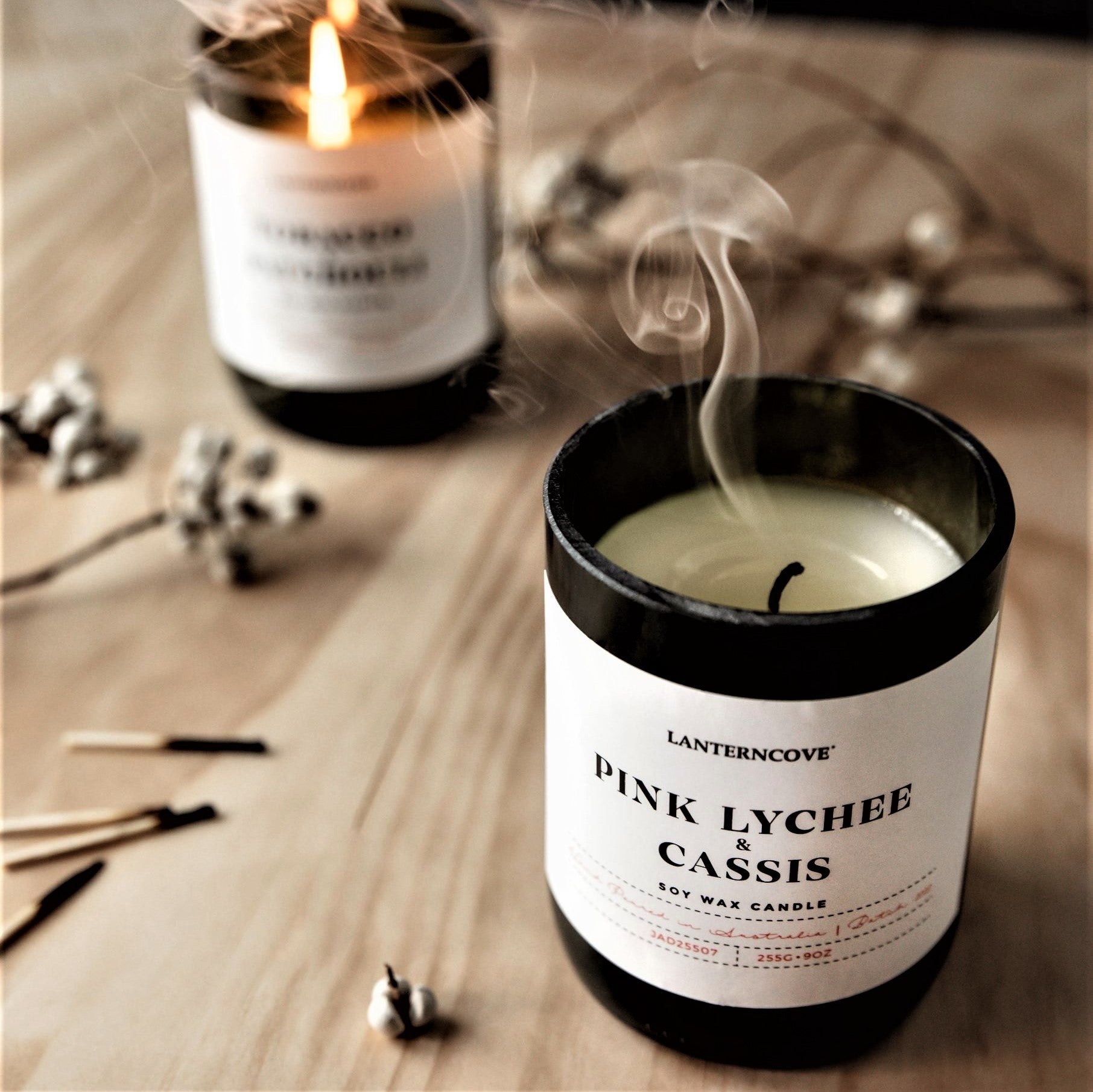Instill Your Home with the Aroma of Crystal Soy Candles and Home Fragrance
Instill Your Home with the Aroma of Crystal Soy Candles and Home Fragrance
Blog Article
From Wick to Wax: Comprehending the Chemistry Behind Soy Wax Candles and Their Ecological Effect
As we brighten our areas with the warm glow of candles, there lies a world of detailed chemistry behind the apparently simple act of lighting a soy wax candle. Join us as we untangle the scientific intricacies behind soy wax candle lights and explore their implications on our environment.
Soy Wax Vs. Paraffin Wax
When contrasting soy wax and paraffin wax for candle light production, it is necessary to comprehend the distinctive characteristics and benefits of each product. Soy wax is a natural, eco-friendly resource obtained from soybean oil, making it naturally degradable and eco-friendly - crystal soy candles. In comparison, paraffin wax is a by-product of petroleum refining, which raises concerns regarding its environmental impact and sustainability
Soy wax candles melt cleaner and emit much less residue compared to paraffin wax candle lights, making them a healthier selection for interior air high quality. In addition, soy wax has a lower melting factor, enabling a longer-lasting candle that disperses fragrance much more successfully. Paraffin wax, on the various other hand, often tends to burn faster and less cleanly, possibly releasing unsafe chemicals into the air.
From a sustainability perspective, soy wax is favored for its biodegradability and eco-friendly sourcing, aligning with the growing consumer choice for ecologically mindful products. While paraffin wax has been a standard option in candle light making due to its cost and convenience of usage, the shift in the direction of eco-friendly choices like soy wax is gaining energy in the market.
Chemical Make-up of Soy Wax
:max_bytes(150000):strip_icc()/SPR-types-of-Candle-Wax-5323778-hero-e4277e76885049a28707749d892fe592.jpg)
Combustion Refine in Soy Candles
The chemical composition of soy wax directly influences the burning process in soy candles, impacting elements such as melt time, fragrance release, and environmental influence. When a soy candle light is lit, the warmth from the flame melts the wax near the wick.
The combustion efficiency of soy candle lights is affected by the purity of the soy wax and the quality of the wick. A clean-burning soy candle with an appropriately sized wick YOURURL.com will certainly minimize and produce a stable fire soot development. This not only prolongs the shed time of the candle yet likewise enhances the launch of scents. In addition, soy wax candle lights have a reduced environmental influence compared to paraffin candles due to their renewable and biodegradable nature.

Environmental Advantages of Soy Wax

Taken into consideration a sustainable alternative to conventional paraffin wax, soy wax provides sites significant environmental benefits that make it a prominent choice amongst eco-conscious consumers. One substantial benefit of soy wax is its eco-friendly sourcing. Soy wax is obtained from soybean oil, which is mostly cultivated in the United States. The farming of soybeans aids support regional farmers and decreases the dependence on non-renewable nonrenewable fuel sources made use of in paraffin wax production. Furthermore, soy wax is biodegradable, meaning it breaks down normally without releasing damaging contaminants right into the environment. This particular makes soy wax candles a much more eco pleasant option contrasted to paraffin wax candle lights, which are made from oil, a non-renewable resource. Soy wax burns cleaner and generates much less soot than paraffin wax, adding to much better interior air top quality and minimizing the demand for cleaning and maintenance. In general, the environmental advantages of soy wax line up with the expanding demand for green and sustainable items out there.
Recycling and Disposal Considerations
Reusing and proper disposal of soy wax candles play a vital function in preserving environmental sustainability and lowering waste in areas and houses. The very first step is to make certain that the candle has melted totally when it comes to reusing soy wax candle lights. This can be achieved by allowing the candle light to melt up until the wick is no longer functional, and after that allowing the remaining wax cool and strengthen. Once the wax has actually solidified, it can be very carefully removed from the container.

In regards to disposal, if recycling is not an option, soy wax candle lights are eco-friendly and can be securely gotten rid of in many house waste systems. However, it is always advised to inspect with regional reusing facilities or waste monitoring services for details standards on candle light disposal to make certain proper handling and environmental management.
Final Thought
In verdict, the chemistry behind soy wax candle lights exposes their ecological benefits over paraffin wax candles. Soy wax, obtained from soybean oil, burns cleaner and creates much less soot when compared to paraffin wax.
When comparing soy wax and paraffin wax for candle light making, it is vital to understand the distinct attributes and benefits of each material (soy candles).Soy wax candle lights melt cleaner and send out much less residue contrasted to paraffin wax candle lights, making them a much healthier selection for interior air quality.Considered a lasting option to conventional paraffin wax, soy wax provides notable ecological advantages that make it a popular selection among eco-conscious customers. Soy wax burns cleaner and produces much less soot than paraffin wax, adding to far better indoor air top quality and lowering the demand for cleaning and upkeep.In verdict, the chemistry behind soy wax candles exposes their ecological advantages over paraffin wax candles
Report this page